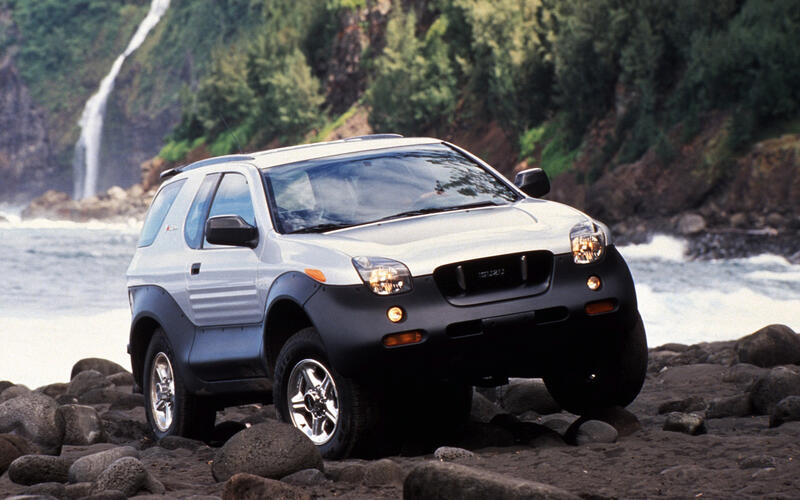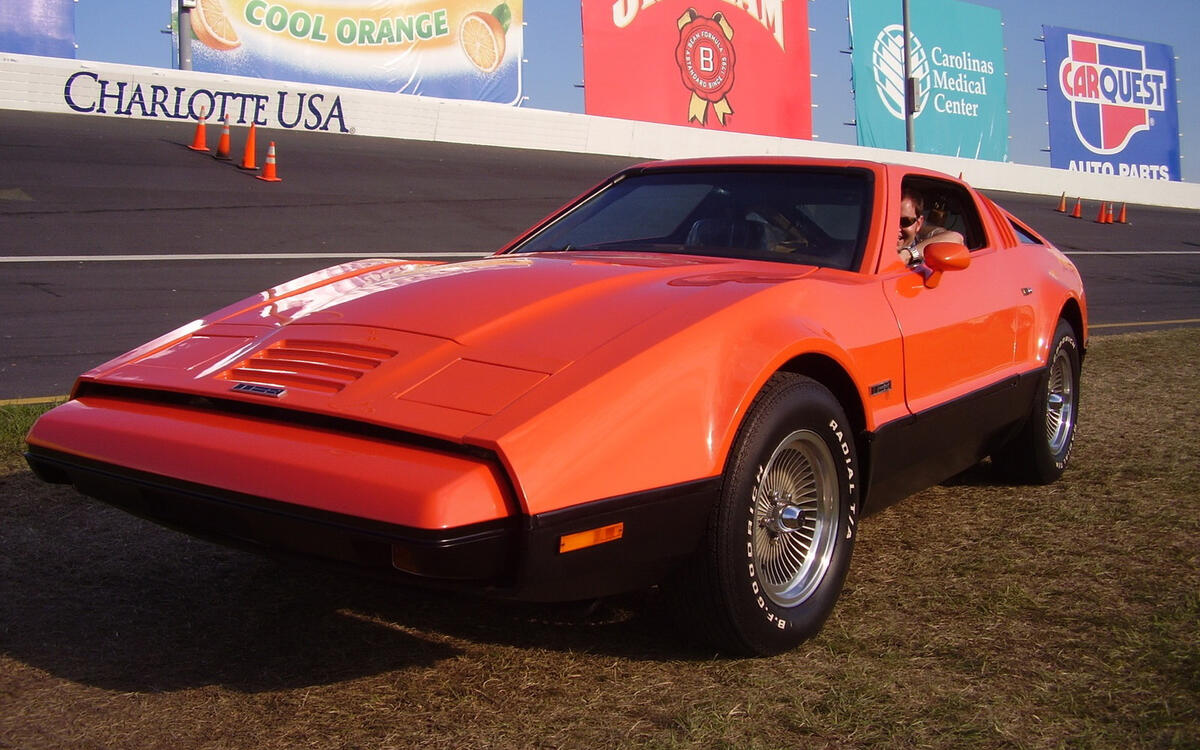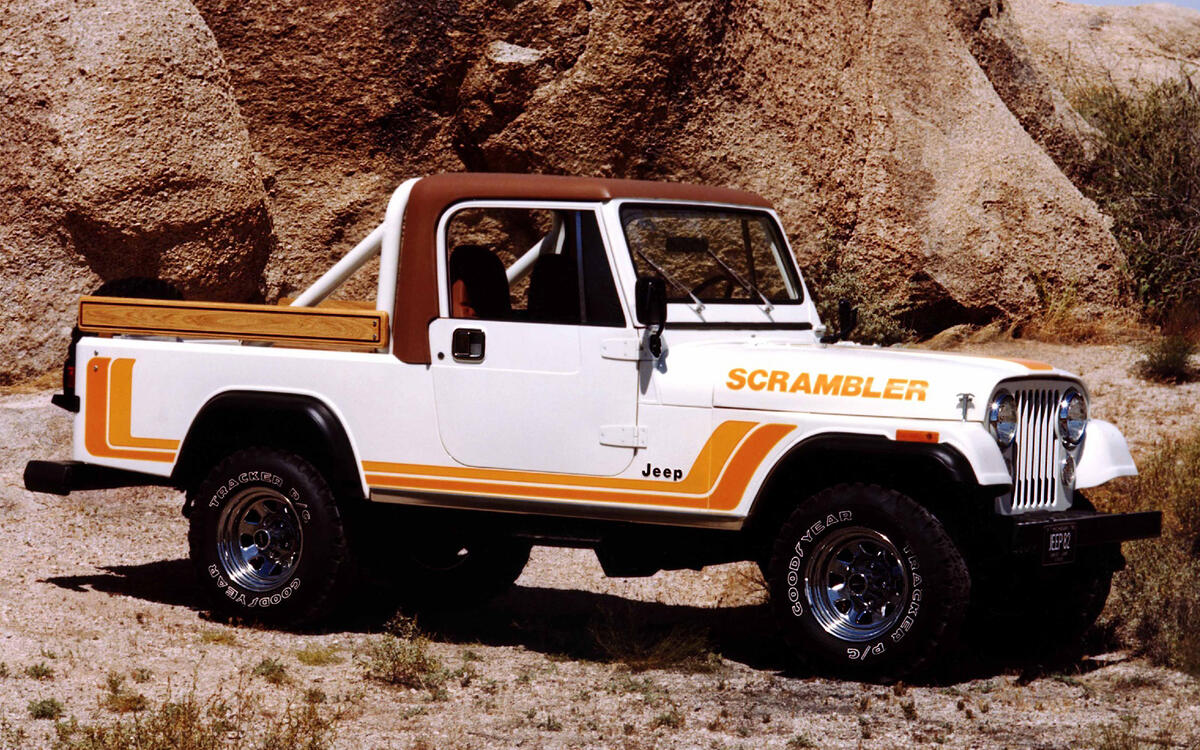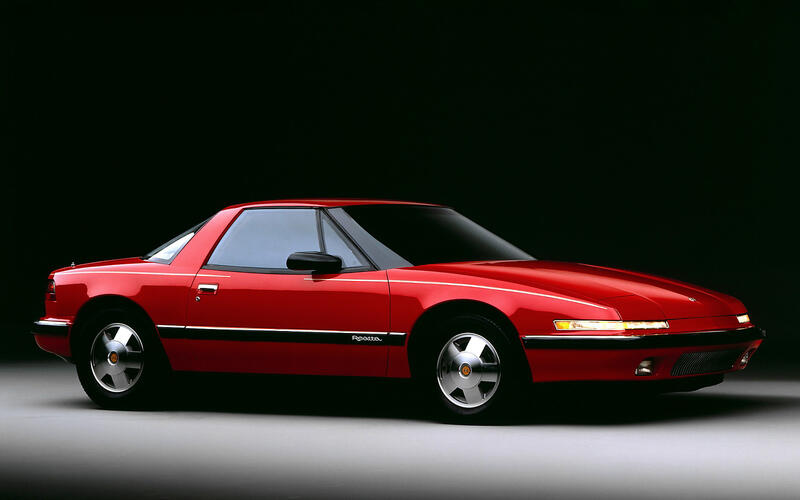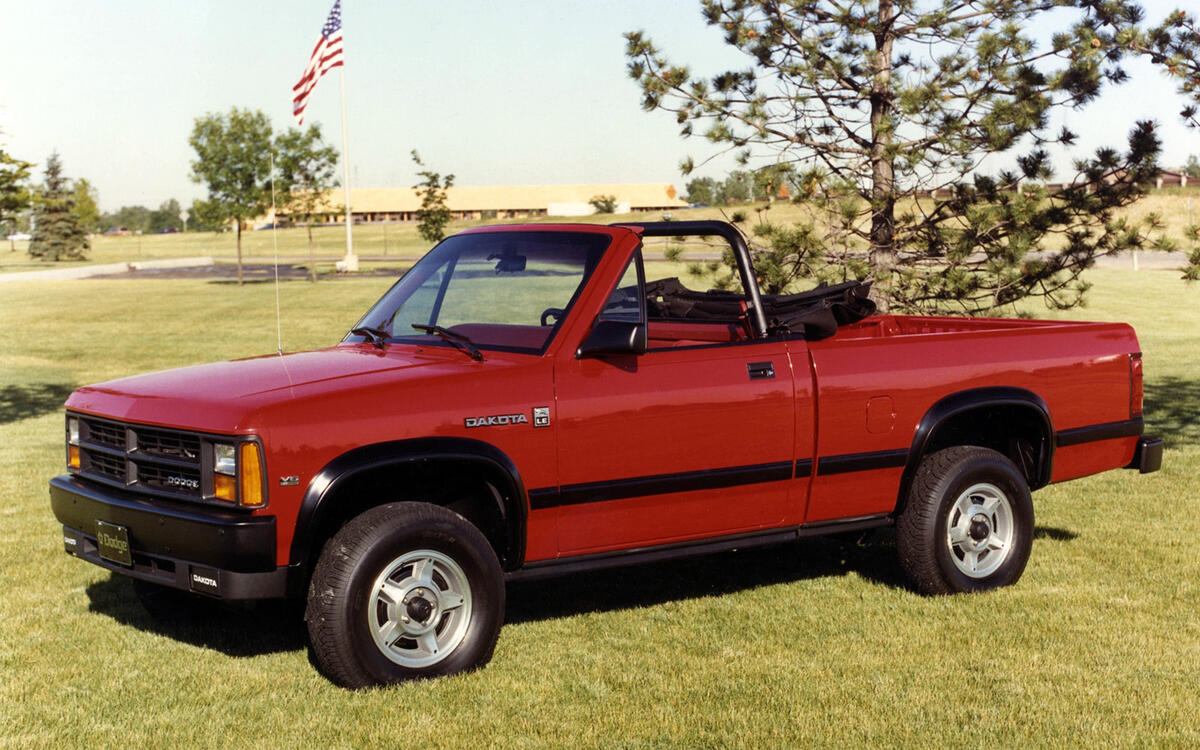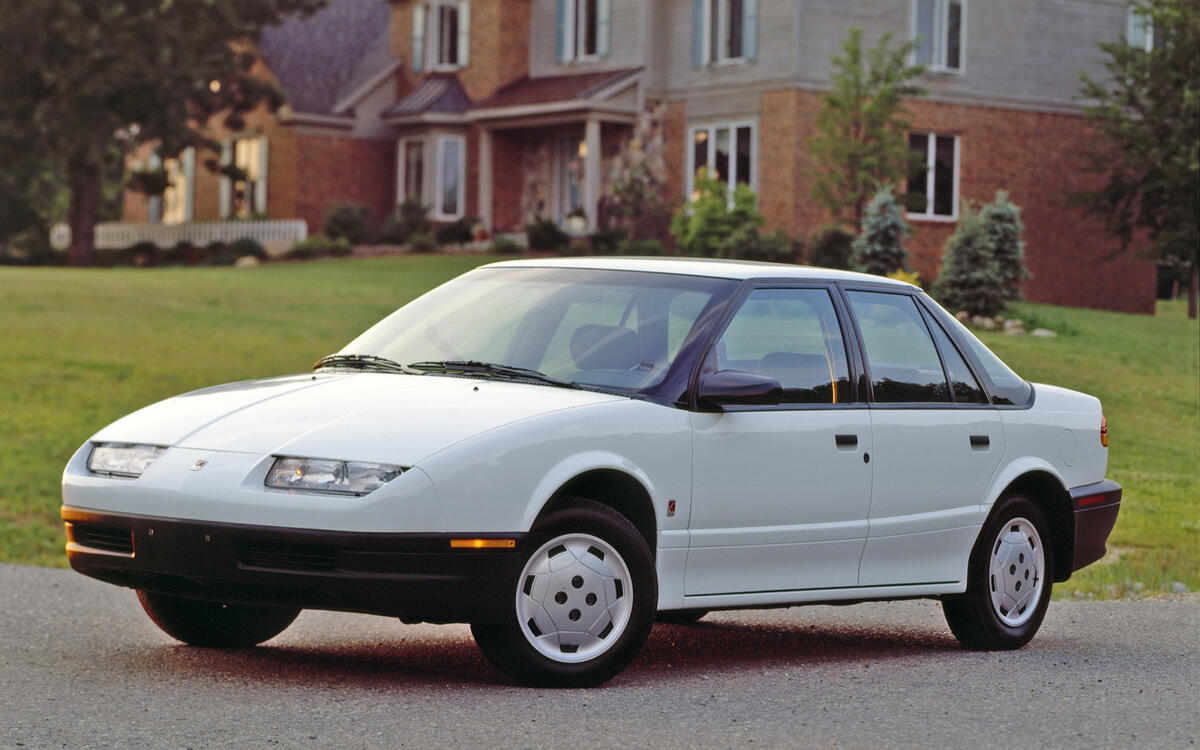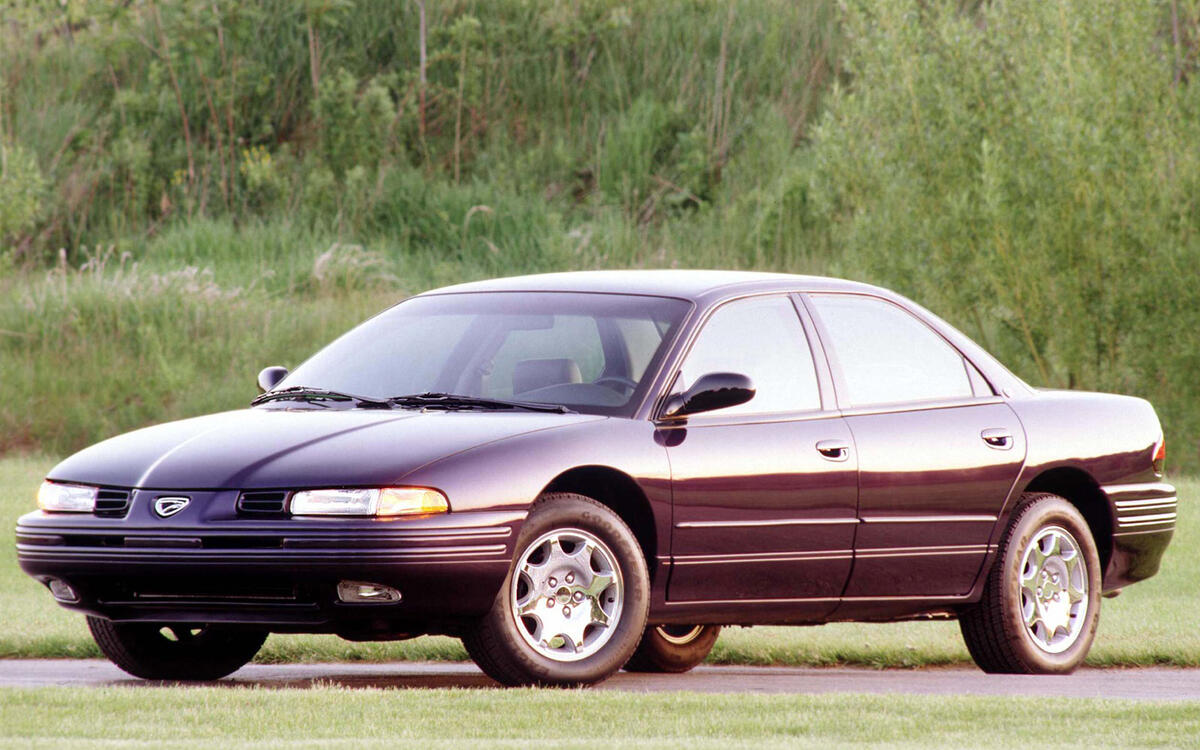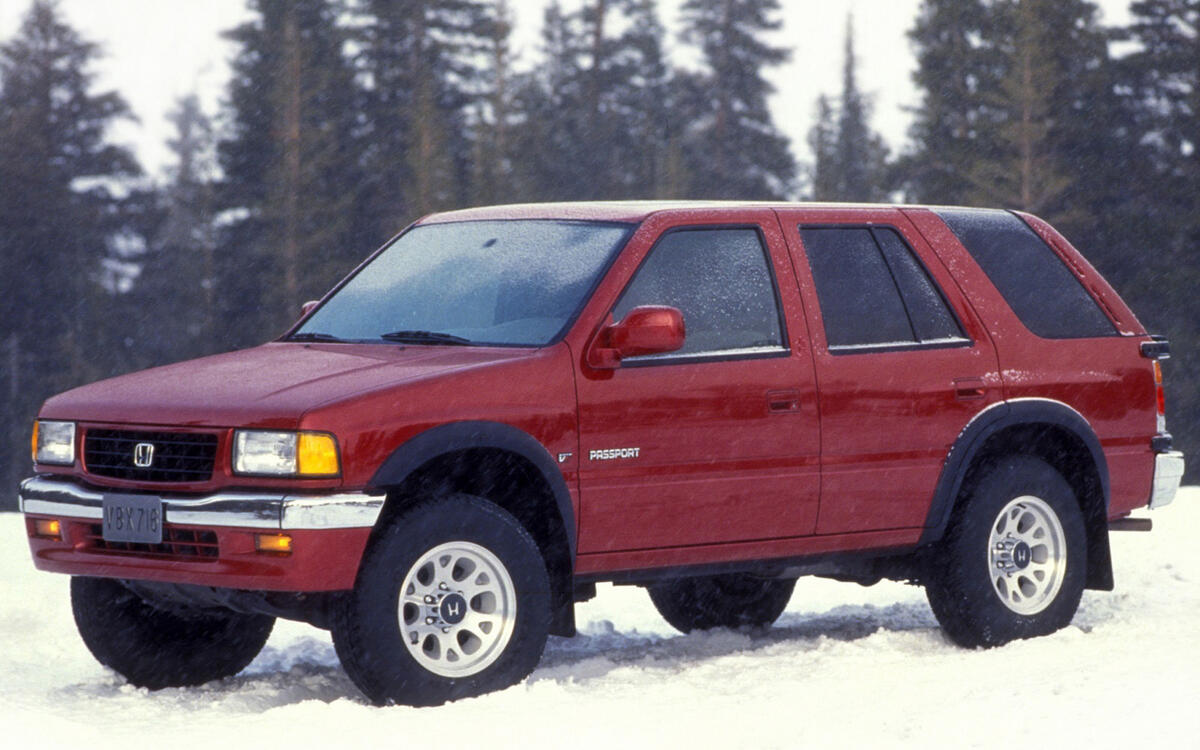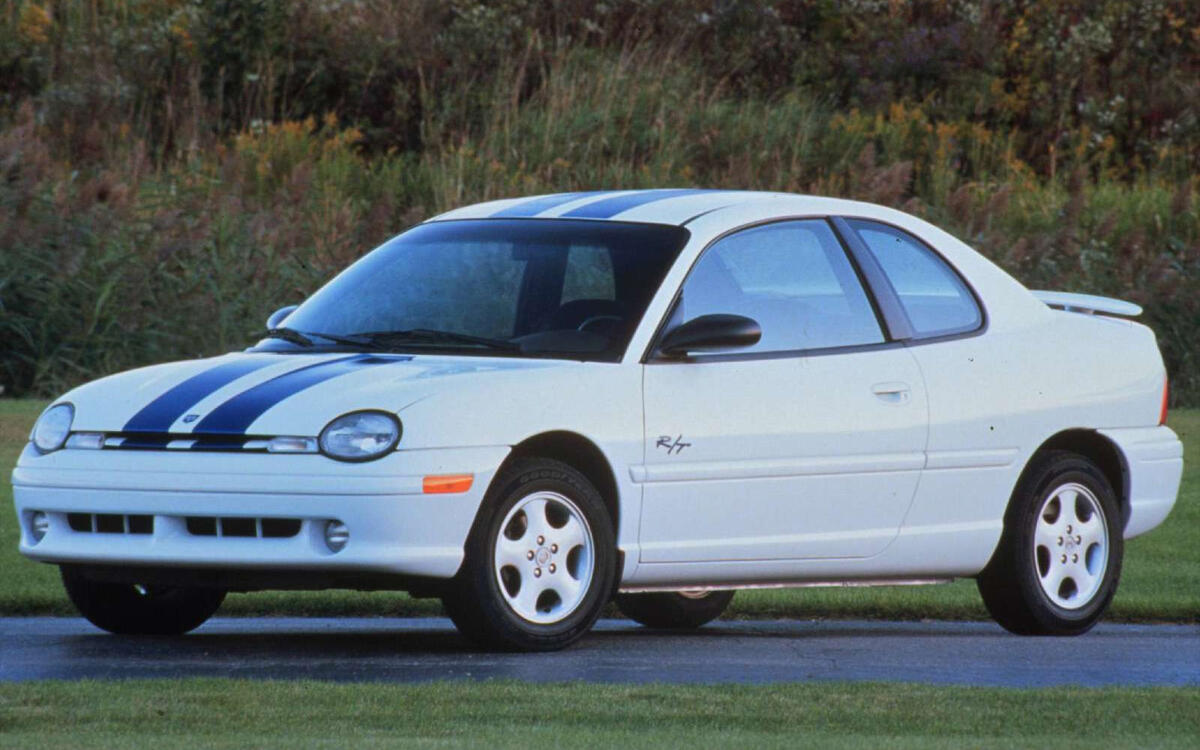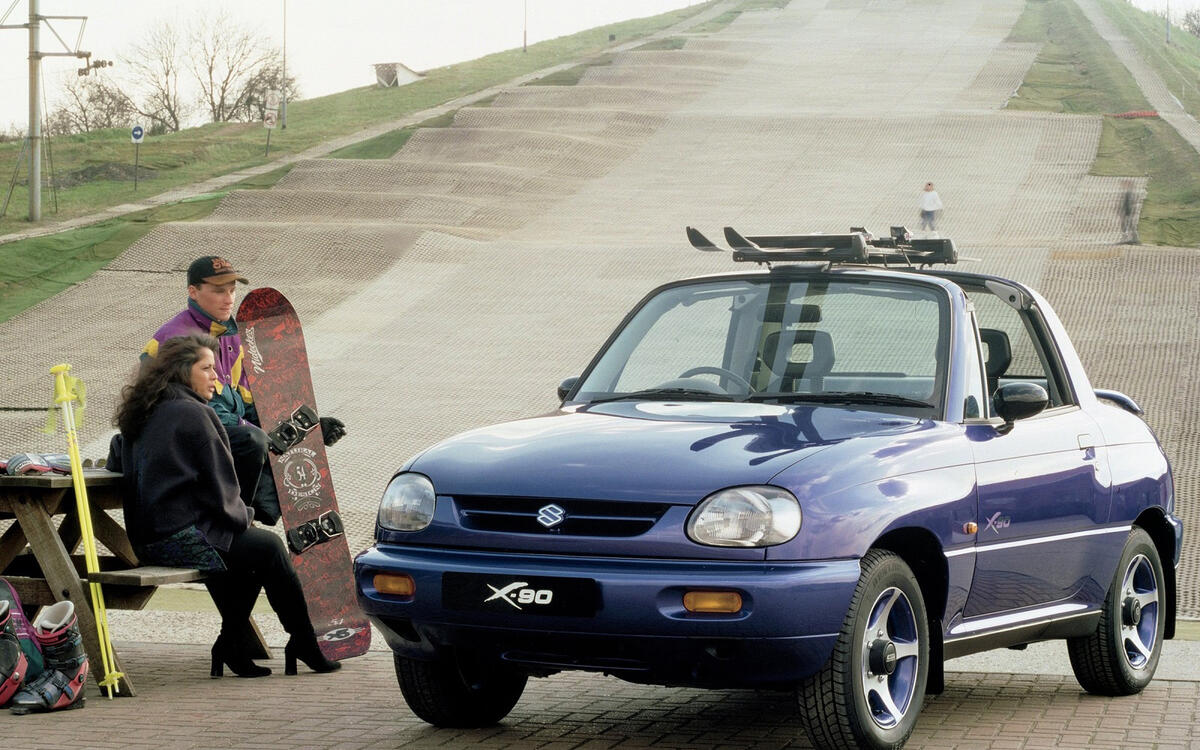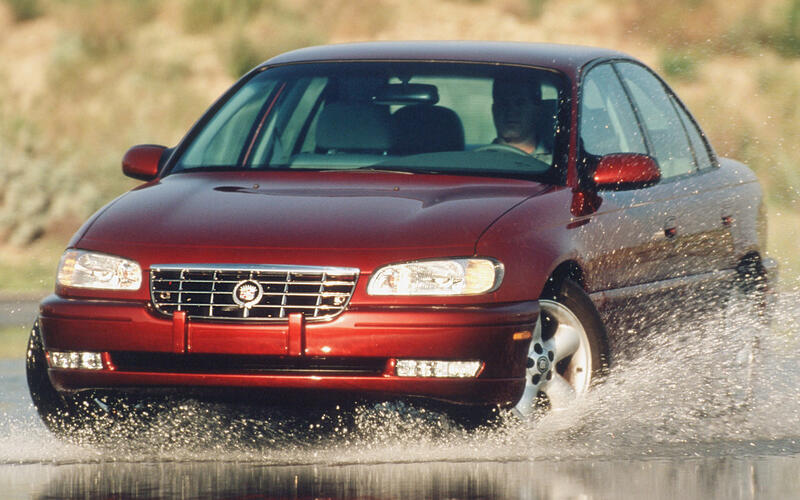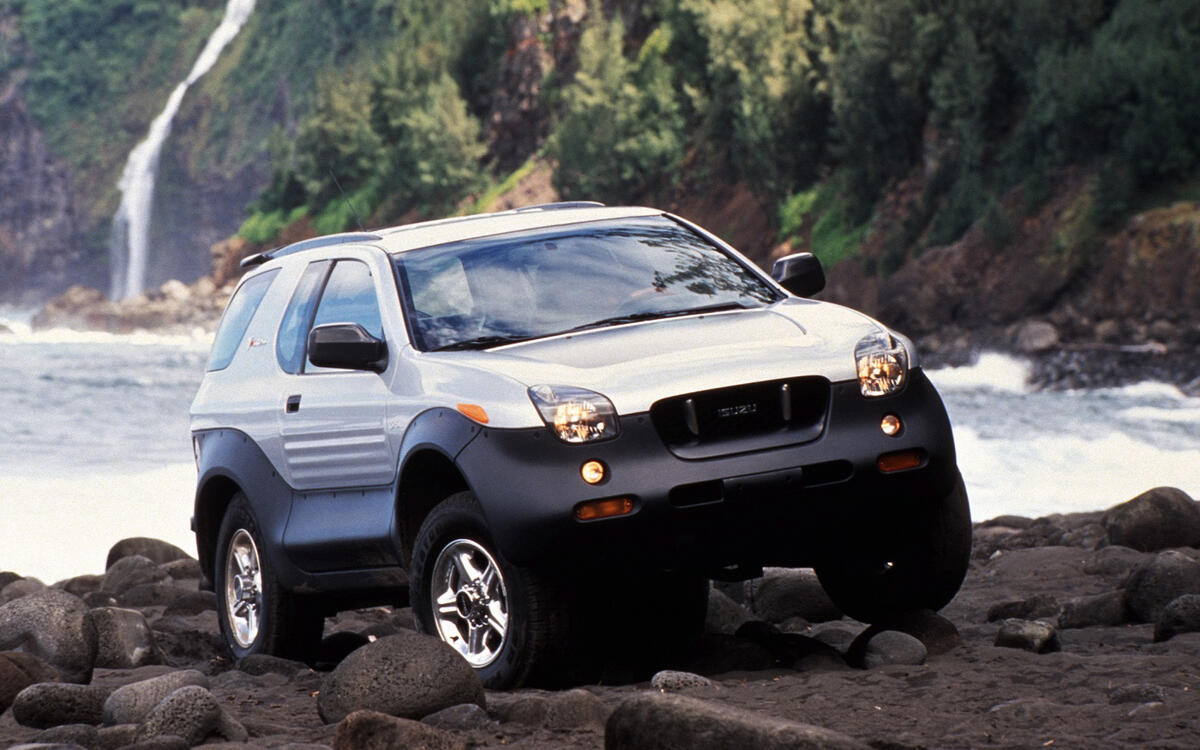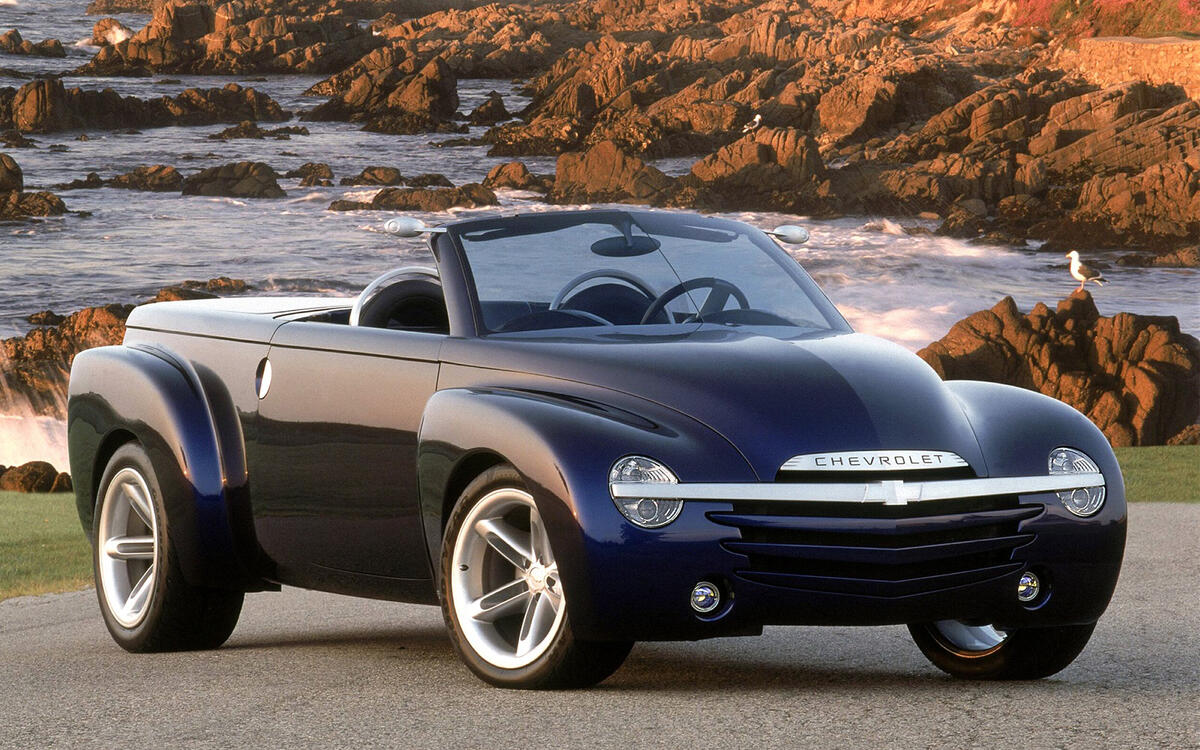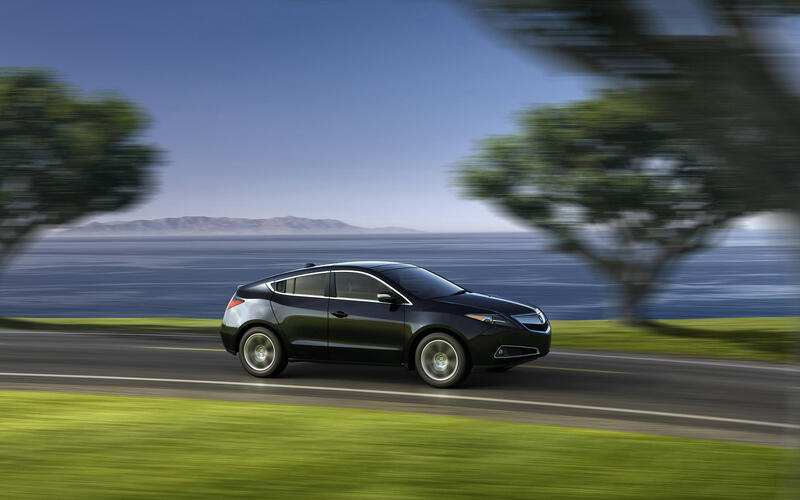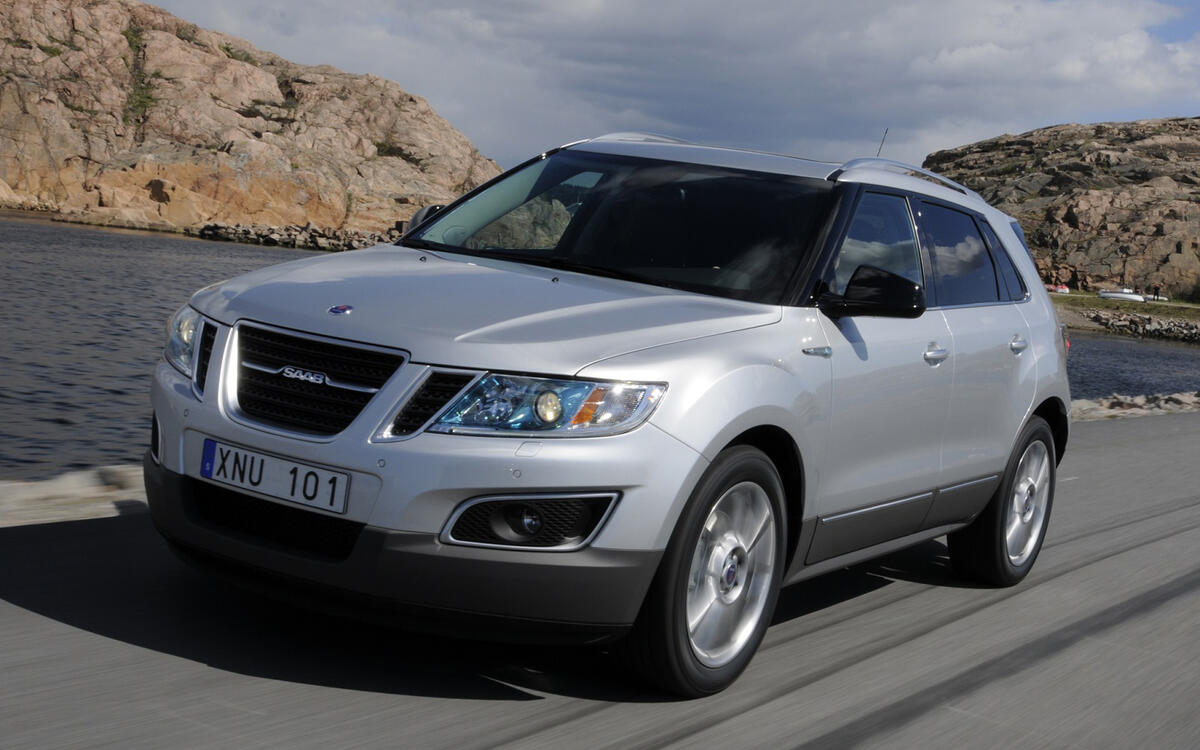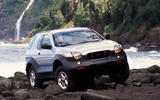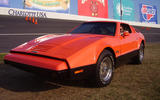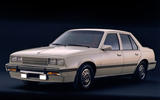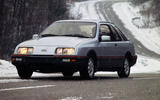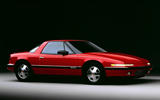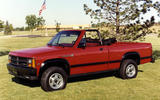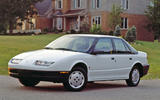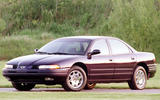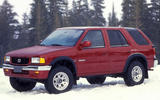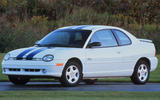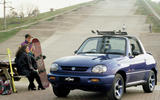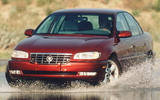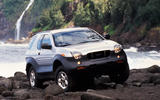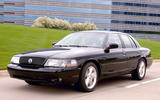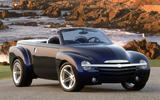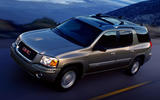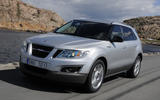 Slide of
Slide of
No car company sets out to make an unremarkable car.
But succeed at that, they do. Here’s our look at the cars America totally forgot were ever available on the market:
 Slide of
Slide of
Bricklin SV-1 (1974)
Built in Canada, the Bricklin SV-1 represented entrepreneur Malcom Bricklin’s vision of a safe sports car. He got the safety aspect right: the SV-1 boasted a steel roll cage, side rails and sizable bumpers on both ends. He forgot about the “sport” aspect, though. The SV-1 launched with a 220 HP AMC V8, but later models settled for a 175 HP Ford V8 strangled by emissions hardware and bolted to a three-speed automatic transmission.
It’s a dark spot in a Bricklin’s lengthy automotive career, which includes spearheading Subaru’s entry into the US and selling Fiat’s mid-engined X1/9 under the Bertone name during the 1980s.
 Slide of
Slide of
Jeep CJ-8 (1981)
The Jeep CJ-8 was a CJ-7 with 10 additional inches of sheet metal between the axles. It retained the CJ-7’s legendary off-road capacity, but it was unique in its segment because it was more of a leisure-oriented model than a workhorse. Jeep didn’t replace the CJ-8 until it introduced the Unlimited variant of the TJ-series Wrangler in 2004, and it has recently launched the Wrangler-based Gladiator pickup.
 Slide of
Slide of
Cadillac Cimarron (1982)
The Cimarron was Cadillac’s hotly-anticipated answer to compact luxury cars like the BMW 3 Series and the then-upcoming Mercedes-Benz 190. Instead of developing an entry-level model from scratch, Cadillac took the contentious route of re-engineering a Chevrolet Cavalier. It’s like if Mercedes tried to turn a Renault 18 into the 190.
Underpowered and overly austere, the Cimarron was a disaster. Adding a V6 to the lineup (and later making it standard) was too little, too late to save its career. The Cimarron left its mark on Cadillac history in the worst possible way. John Howell, Cadillac’s product director from 2004 to 2010, kept a photo of the Cimarron in his office captioned “lest we forget.”
 Slide of
Slide of
Merkur XR4Ti (1985)
Ford believed selling the European Ford Sierra XR4i in America would help it fend off competition from brands like BMW, Mercedes-Benz and Audi. It chose to market the car under a new brand called Merkur, a name presumably chosen because it sounded more German.
The US-spec model received a turbocharged 2.3-liter four-cylinder engine instead of a V6, which explains the “T” in its name. Too esoteric, the XR4Ti retired in in 1989 after Ford imported about 42,000 examples from Germany. The bigger Merkur Scorpio suffered the same fate.
 Slide of
Slide of
Buick Reatta (1988)
Offered as a coupe and as a convertible, the Reatta sat at the very top of the Buick lineup in the late 1980s. It was built largely by hand in a special facility located in Lansing, Michigan, and it was a relatively advanced car for its era. Buyers could order 16-way adjustable seats, automatic headlights and even a touch screen, though the forward-thinking feature was phased out before the end of production.
Buick built nearly 22,000 examples of the Reatta between 1988 and 1991. It was hardly a success; executives predicted they could sell about 20,000 cars annually. The Reatta was not replaced, and Buick hasn’t sold a two-seater model since.
 Slide of
Slide of
Chrysler TC by Maserati (1988)
Chrysler and Maserati's parent company De Tomaso agreed to jointly build a sports car in the mid-1980s. The idea was brilliant on paper: Chrysler would leverage the prestige associated with the Maserati name to build a flagship model capable of taking on some of the finest two-doors on the American market.
The decision to assemble the TC in Milan delayed the start of production by about two years. Engine options included a 2.2-liter four-cylinder with a Cosworth-designed 16-valve head and a V6 from Mitsubishi. Chrysler pulled the plug on the project after importing about 7,300 cars to America. In hindsight, using a true Maserati engine could have given the TC’s career a significant boost.
 Slide of
Slide of
Dodge Dakota Sport Convertible (1989)
Buyers met the Dodge Dakota Sport Convertible with a collective “wait, what?” followed by a “why?” when it broke cover in 1989. As its name clearly implies, it was a Dakota trucklet with a manual soft top, though the “Sport” part of the moniker was highly debatable. It didn’t exist for long, and it never spawned competition from Ford or Chevrolet, but it remains one of the most unique pickups in the 1980s.
We imagine we’ll be saying the same thing about Land Rover’s Range Rover Evoque Convertible in 30 years.
 Slide of
Slide of
Saturn S-Series (1990)
Famously launched as “a different kind of car company,” Saturn took a novel approach to building an economy car to distance itself from other brands in the General Motors empire. In reality, it was an attempt at reclaiming some of the market share the group had reluctantly given up to its Japanese rivals during the 1980s.
Saturn’s first-generation S-Series model was an econobox with plastic body panels offered as a sedan, a wagon and a coupe. The company widely advertised its “no haggle” pricing, and it built its millionth car in 1995, just five years after manufacturing its first car. Mass-produced and mass-destroyed, the original Saturn S-Series is a rare sight on American roads today.
 Slide of
Slide of
Eagle Vision (1992)
The Vision represented Eagle’s vision (pardon the pun) of an aerodynamic sports sedan in the early 1990s. It was designed to replace the Eagle Premier, which was closely related to the Renault 25, and it shared its LH architecture with comparable models built by Dodge and Chrysler. Lackluster performance and a haphazard build quality sealed its fate, and Chrysler axed the Eagle brand after 1997.
 Slide of
Slide of
Honda Passport (1993)
Honda’s first SUV was actually an Isuzu. Instead of developing an off-roader from scratch, company officials asked Isuzu to slap Honda emblems on the Rodeo and call it a day. It was blatant badge-engineering, but the Passport was surprisingly popular in America thanks to Honda’s reputation for building stellar cars. It carried on for two generations until Honda replaced it with the original Pilot, which it designed in-house.
 Slide of
Slide of
Dodge Neon ACR; Dodge Neon R/T (1995; 1998)
Turning the Dodge Neon, which Chrysler manifestly crafted from a solid block of mediocrity, into a performance car was easier said than done. Dodge stepped up to the challenge with the Neon American Club Racer (ACR), a sportier version aimed at enthusiasts on a tight budget.
Starting with a base model, Dodge added a 150h HP 2.0-liter four-cylinder engine, a shorter final gear, quicker steering hardware and a raft of suspension updates. The ACR even received adjustable Koni dampers in 1997, and buyers could choose to delete the A/C and the radio. It certainly wasn’t an M3, but the Neon ACR became successful in Sports Car Club of America (SCCA) events during the 1990s. The Neon R/T introduced in 1998 bundled many of the ACR’s upgrades in a street-friendly package.
 Slide of
Slide of
Suzuki X-90 (1995)
The X-90 was Suzuki’s effort at turning the Vitara into a more lifestyle-oriented model, a vocation evidenced by its three-box design and its removable roof panels. Many predicted tiny SUVs with thrift shop-like prices would be the next big thing in America, but the X-90 fell flat on its head. Suzuki put it out to pasture after a two-year production run. Today, it’s best remembered for its role in promoting Red Bull energy drinks.
 Slide of
Slide of
Cadillac Catera (1997)
The Cimarron’s legacy faded during the 1990s. The Cadillac Catera likely looks vaguely familiar because it was known as the Vauxhall Omega in England and an Opel elsewhere. It was another attempt by Cadillac to badge-engineer its way into a segment dominated by Mercedes-Benz and BMW. Luxury buyers had a difficult time taking it seriously. Using a duck-like cartoon named Ziggy to advertise the Catera as “the Caddy that zigs” didn’t help its career. Built in Germany, it was cancelled in 2001, about two years earlier than its European cousin.
 Slide of
Slide of
Isuzu Vehicross (1997)
Buyers looking for an SUV with unique styling could do a lot worse than the Isuzu Vehicross. Accurately previewed by a 1993 concept, it commanded attention with one of the wildest and most daring designs on the road. Isuzu built less than 6000 examples of the Vehicross, with most of the production run going to America and a small chunk set aside for the Japanese market.
 Slide of
Slide of
Mercury Marauder (2003)
Mercury revived the Marauder nameplate for the 2003 model year on a high-performance variant of the Grand Marquis, a body-on-frame land yacht prized by taxi cab companies and livery services.
Presented as a four-door muscle car, the Marauder used a 302 HP, 4.6-liter V8 engine sourced from the Ford Mustang Mach 1. Visual tweaks (including a model-specific grille and tinted lights) set the Marauder apart from other Panther platform-based sedans. Marauder production ended in 2004 after Mercury built about 11,000 examples. Ford mothballed the brand in 2011.
 Slide of
Slide of
Chevrolet SSR (2003)
Chevrolet trailed rival Chrysler in the retro car game in the early 2000s. When Chrysler introduced the PT Cruiser, Chevrolet fired back years later with the HHR; when Plymouth launched the Prowler, Chevrolet came out with the Super Sport Roadster (SSR).
The 1940s pickup-inspired sheet metal hid a platform shared with the Chevrolet’s Trailblazer SUV and a V8 engine. It offered two seats, a pickup box hidden under a tonneau cover and a retractable hard top. Less than 25,000 examples were built in the same factory that churned out the Buick Reatta.
 Slide of
Slide of
GMC Envoy XUV (2004)
GMC tried combining a pickup truck and an SUV, two of America’s favorite vehicles, into a single model named Envoy XUV. It looked like a regular SUV at first glance, but it offered a retractable rear roof panel that made carrying taller items a breeze. A fold-down mid-gate similar to the one found in the Chevrolet Avalanche separated the passenger and cargo compartments.
The idea wasn’t brand-new; the 1963 Studebaker Wagonaire offered a similar solution. The Envoy XUT still stands out as one of the few GMC models that wasn’t a carbon copy of a Chevrolet. Tricky to market, it survived just 18 months; around 27,000 were built.
 Slide of
Slide of
Acura ZDX (2009)
Acura quietly admits it developed the ZDX as a two-door coupe, not as a four-door fastback. The extra set of doors was added at the last minute when market research suggested a two-door model would completely fail to win over buyers. In hindsight, the number of doors might not have mattered as much as the polarizing design.
In the US, annual ZDX sales peaked at 3,259 examples in 2010, its first full calendar year on the market, before embarking on a nosedive. Acura dealers moved 1,564 examples in 2011, 775 in 2012, 362 in 2013 (when production ended), and 78 in 2014. The final two unsold examples found a home in 2015.
 Slide of
Slide of
Saab 9-4X (2011)
The 9-4X was Saab’s long-awaited entry into the small luxury SUV segment. It shared its basic mechanical components with the Cadillac SRX, but it wore a Saab-specific design which borrowed styling cues from the second-generation 9-5. Too little, too late, the 9-4X couldn’t steer Saab away from bankruptcy. The company’s records indicate it built less than 1,000 examples of the 9-4X between February and December of 2011, in Mexico.
Here are the unsung heroes of the American car market that nobody remembers
Advertisement


